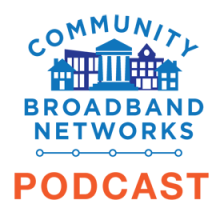Transcript: Community Broadband Bits Episode 224
This is episode 224 of the Community Broadband Bits Podcast. ILSR research associate and MuniNetworks.org writer, H.R. Trostle, joins the show to discuss the recent report on North Carolina's connectivity and the importance of cooperatives. Listen to this episode here.
H.R. Trostle: The telephone cooperative are very used to serving these very sparsely populated rural areas in North Carolina. That's what they were designed to do. That's why they were made.
Lisa Gonzalez: This is episode 224 of the Community Broadband Bits Podcast from the Institute for Local Self-Reliance, I'm Lisa Gonzalez. Recently, we released a report focusing on the availability of high-quality Internet access in North Carolina. H.R. Trostle, a research associate at the Institute and one of our authors on MuniNetworks.org, analyzed data from several different sources and she's talking to Chris this week to discuss her conclusions. She and Chris, who co-authored the report with her, discovered that municipal networks and cooperatives have an important role to play in North Carolina. Take a few minutes to check out the report and check out the detailed maps that show the results of their analysis. The report is titled North Carolina Connectivity: The Good, The Bad, and The Ugly. It's available at ILSR.org and MuniNetworks.org. Now here are Chris and H.R. Trostle, from the Institute for Local Self-Reliance, discussing in detail their recent report and their findings on Internet access in North Carolina.
Christopher Mitchell: Welcome to another edition of the Community Broad Bits Podcast. Coming to you live today from the Institute for Local Self-Reliance offices in Minneapolis, with H.R. Trostle, the co-author of our new report on North Carolina. Welcome to the show.
H.R. Trostle: Thanks Chris, it's great to be here.
Christopher Mitchell: Hannah.
H.R. Trostle: Hi.
Christopher Mitchell: I thought we would start with a broad overview of what did the report cover.



